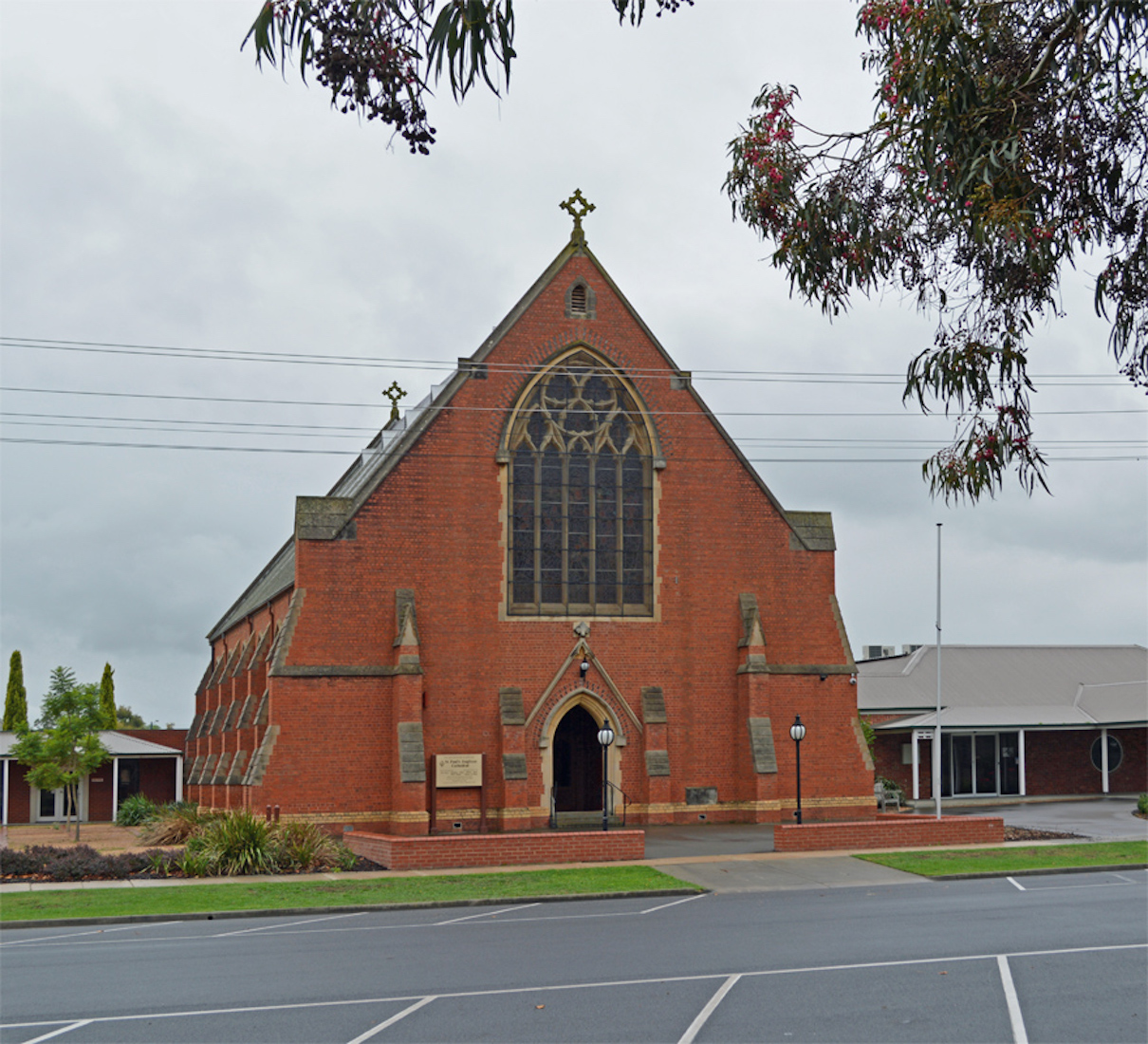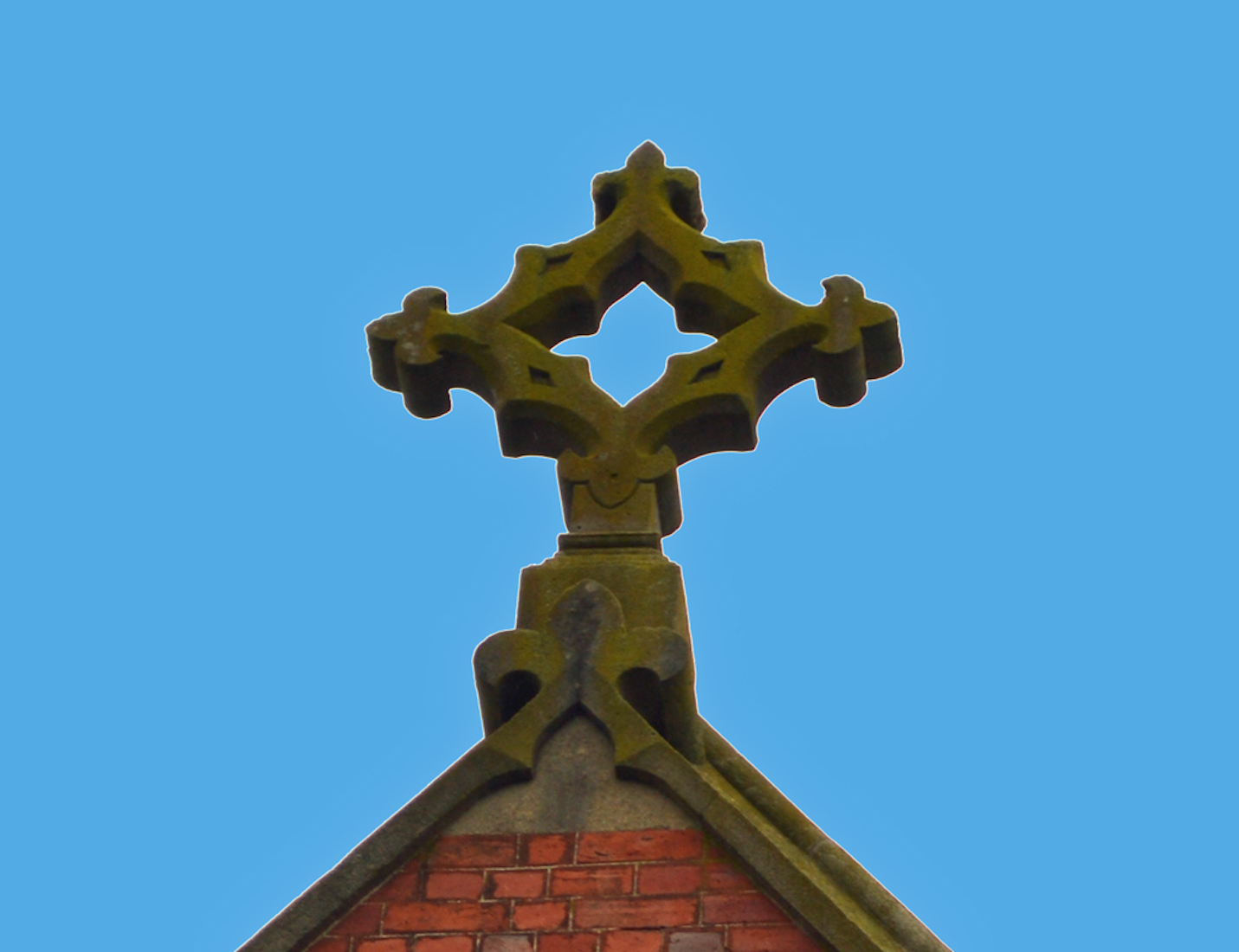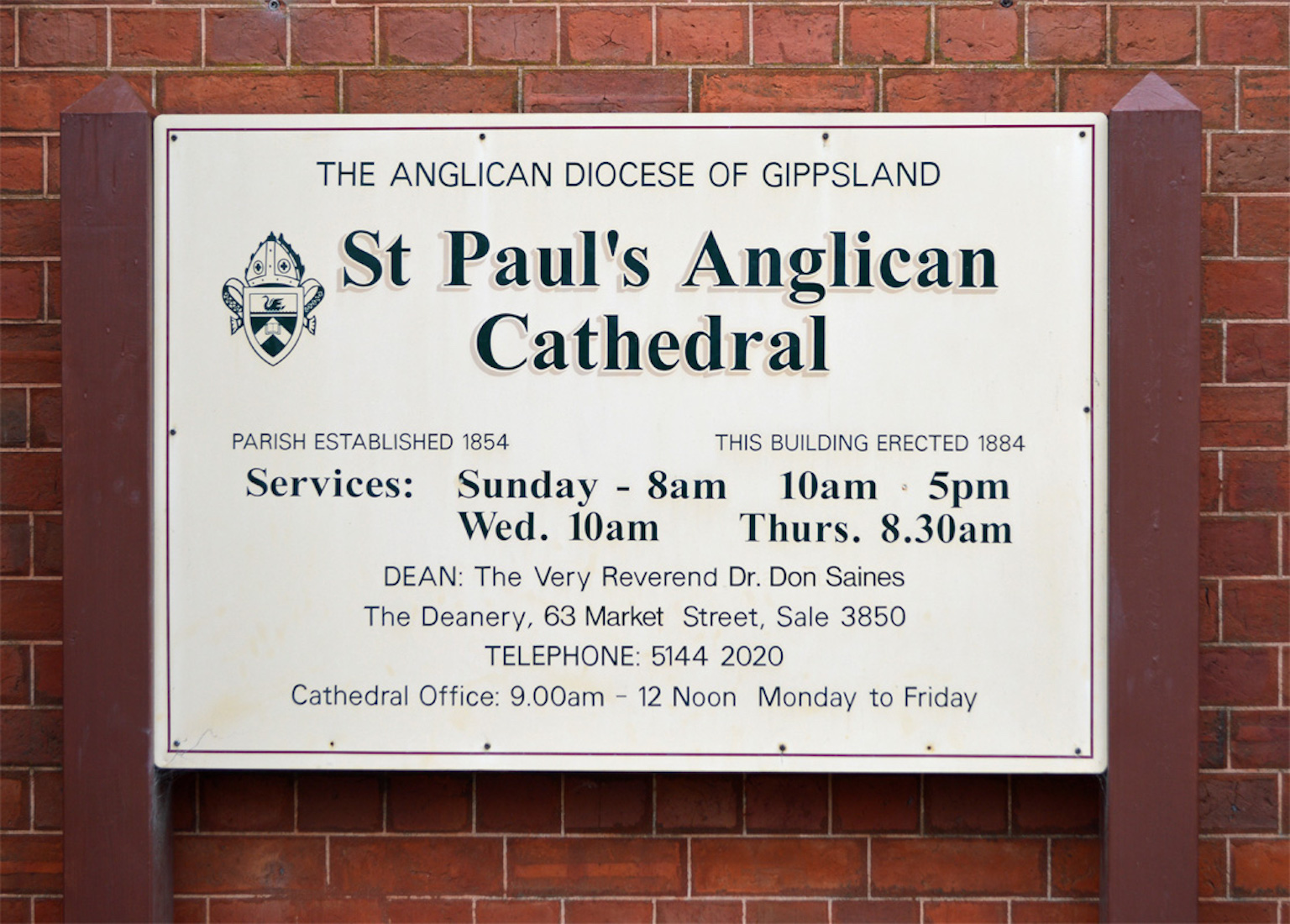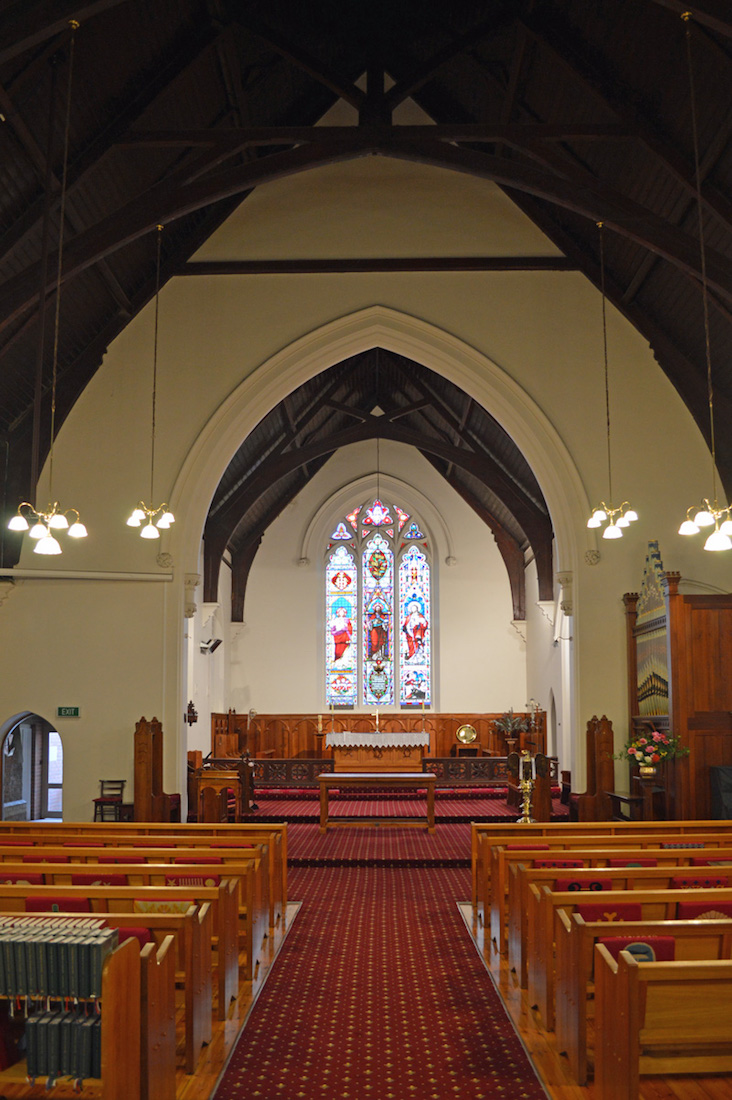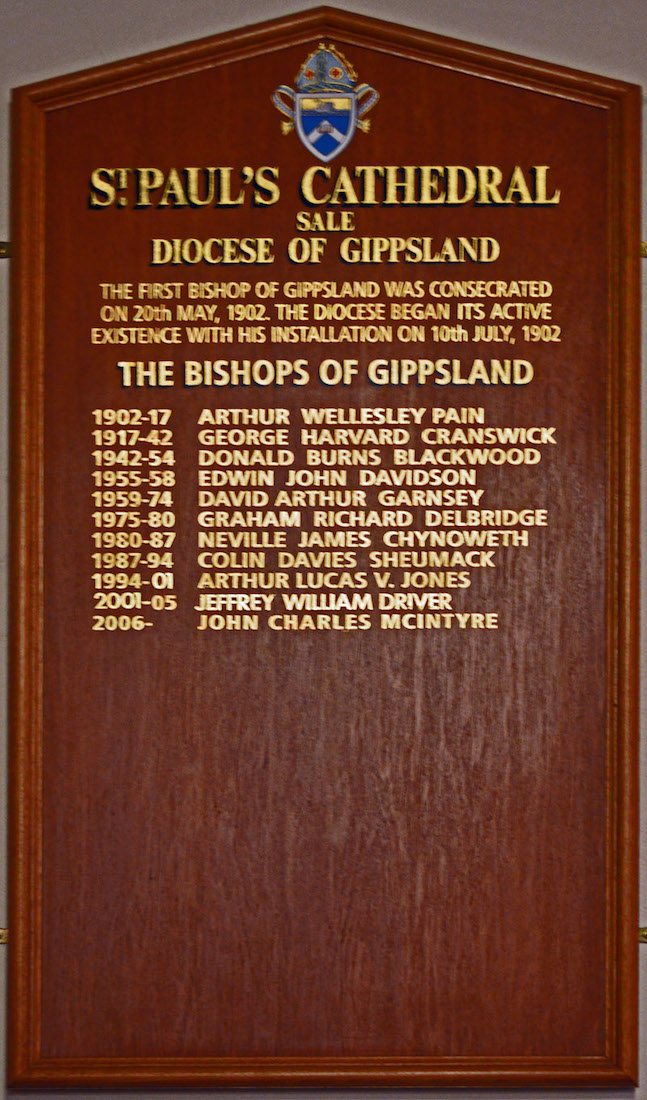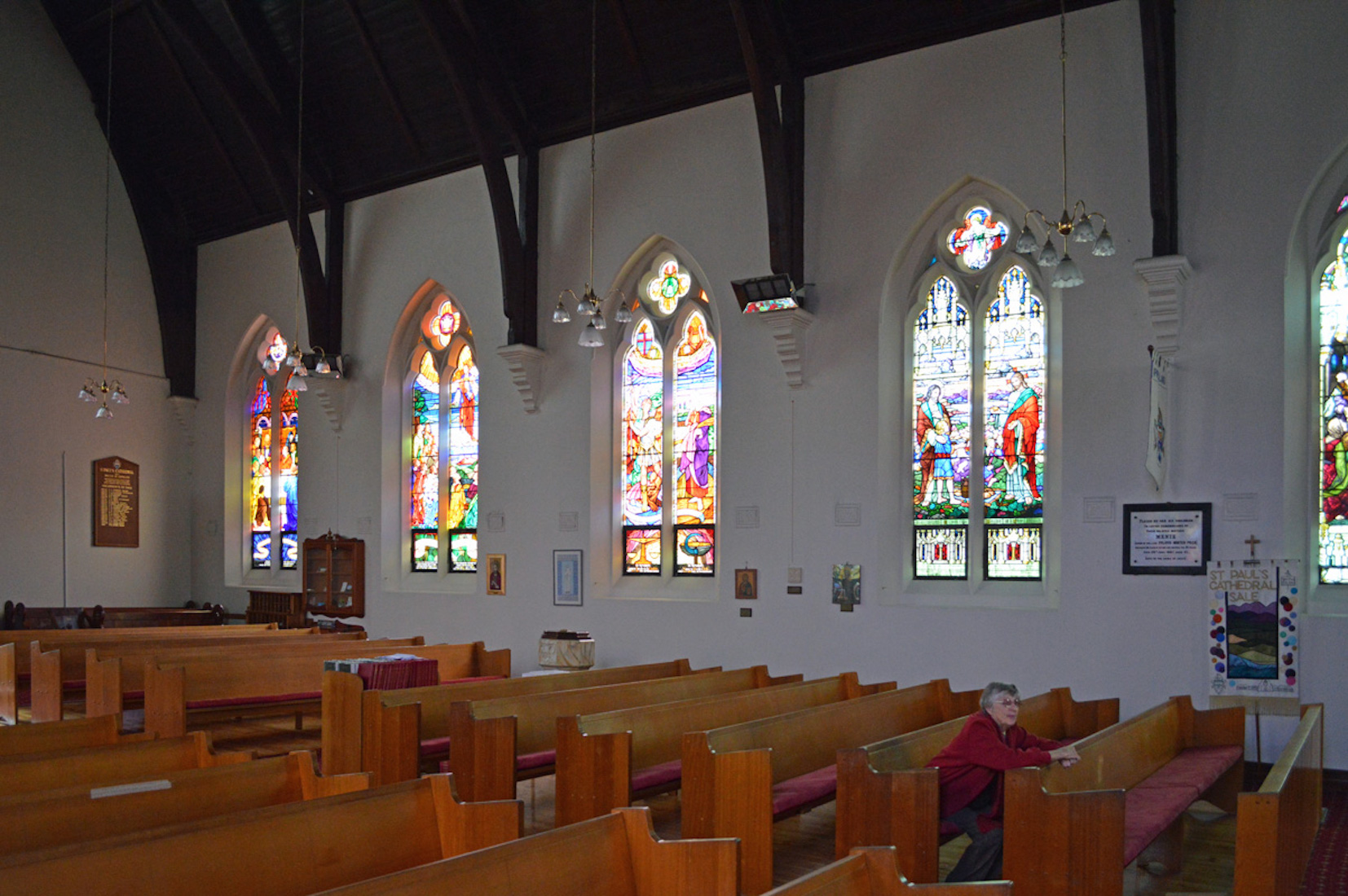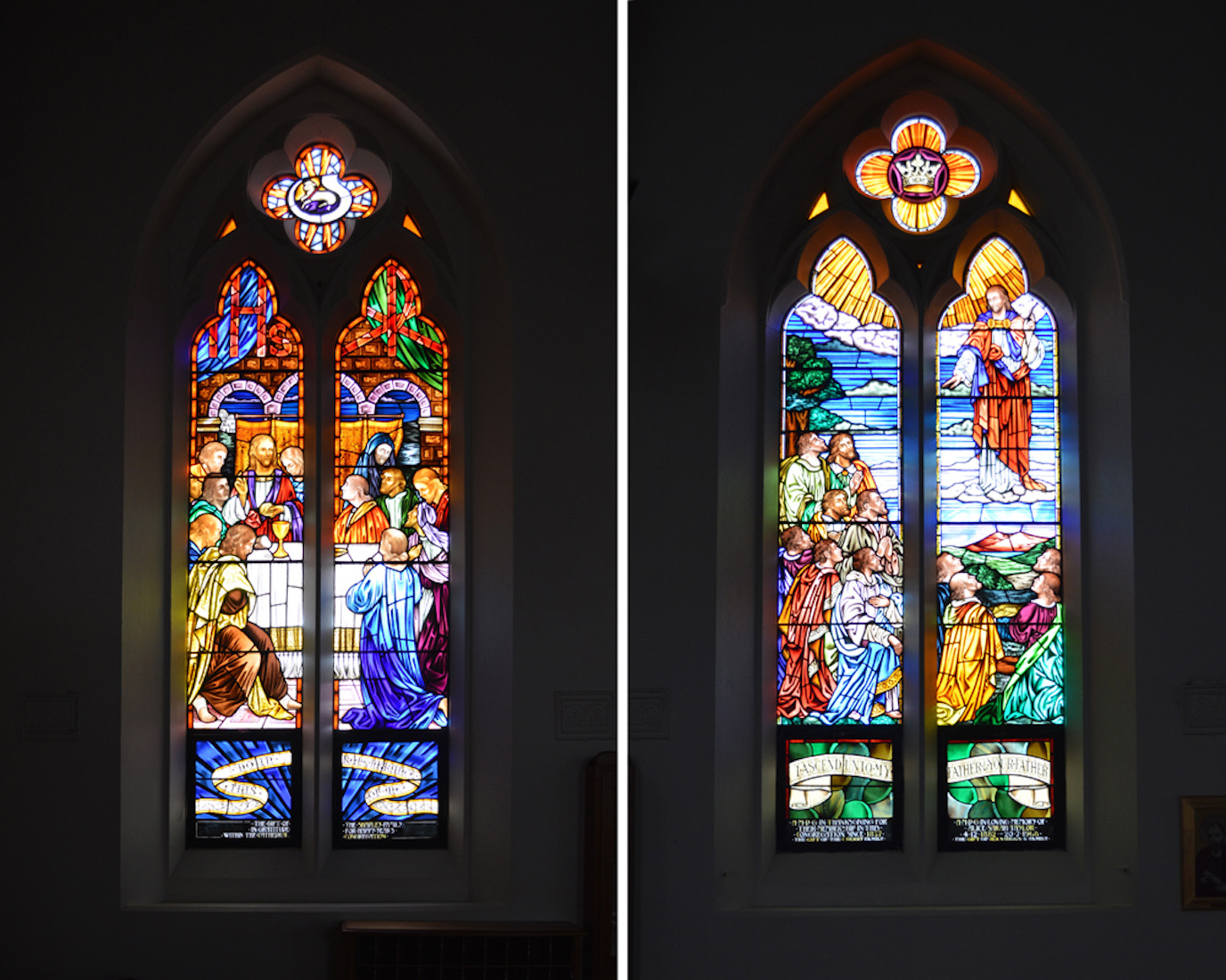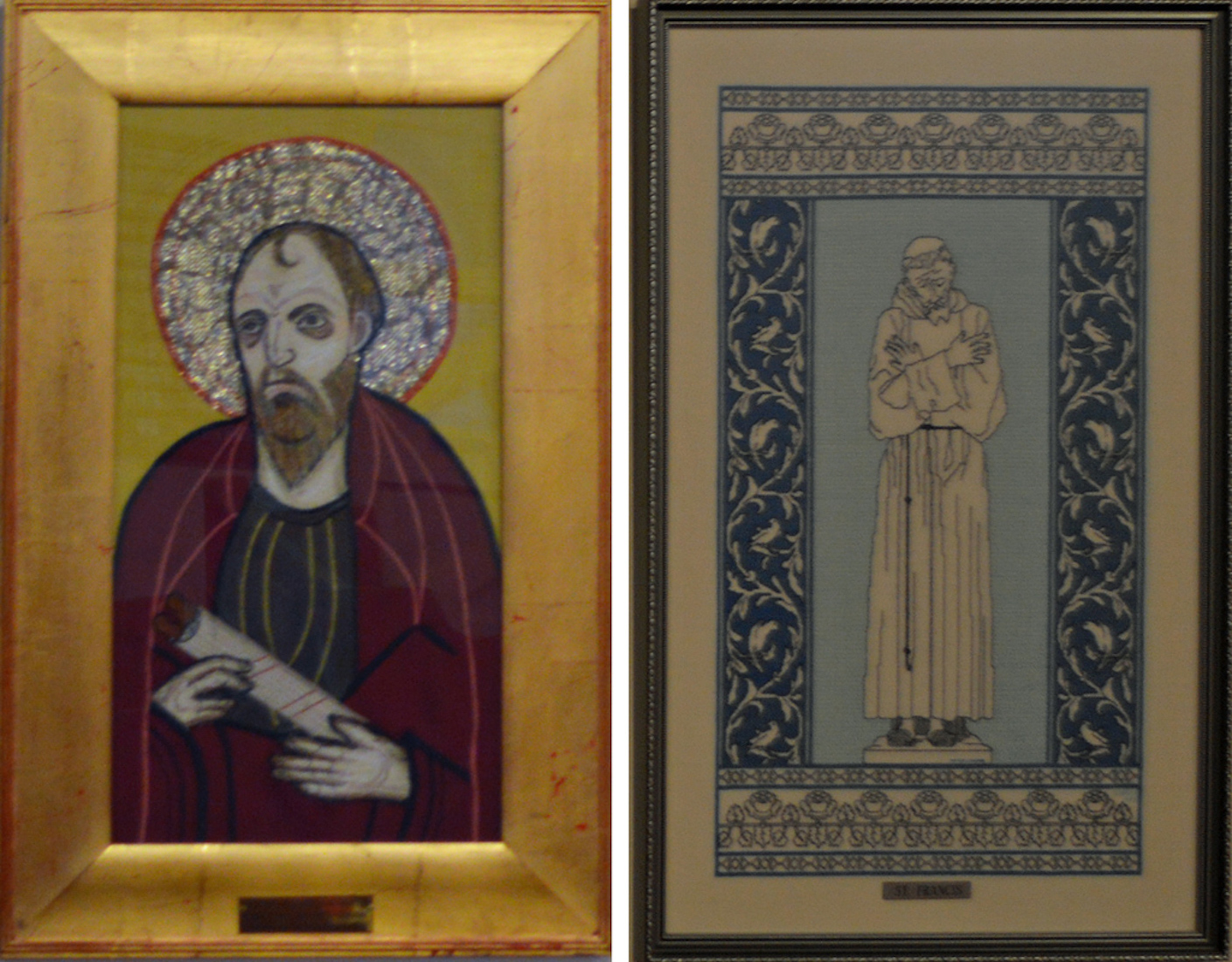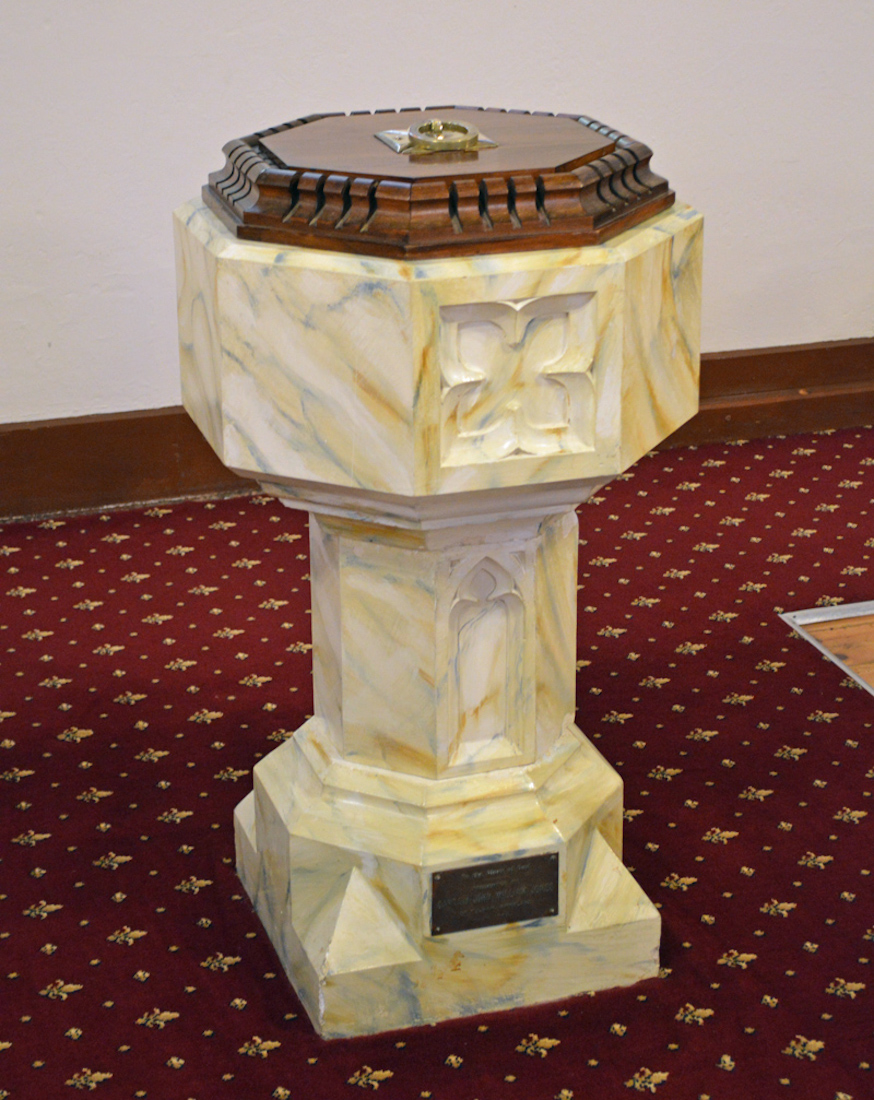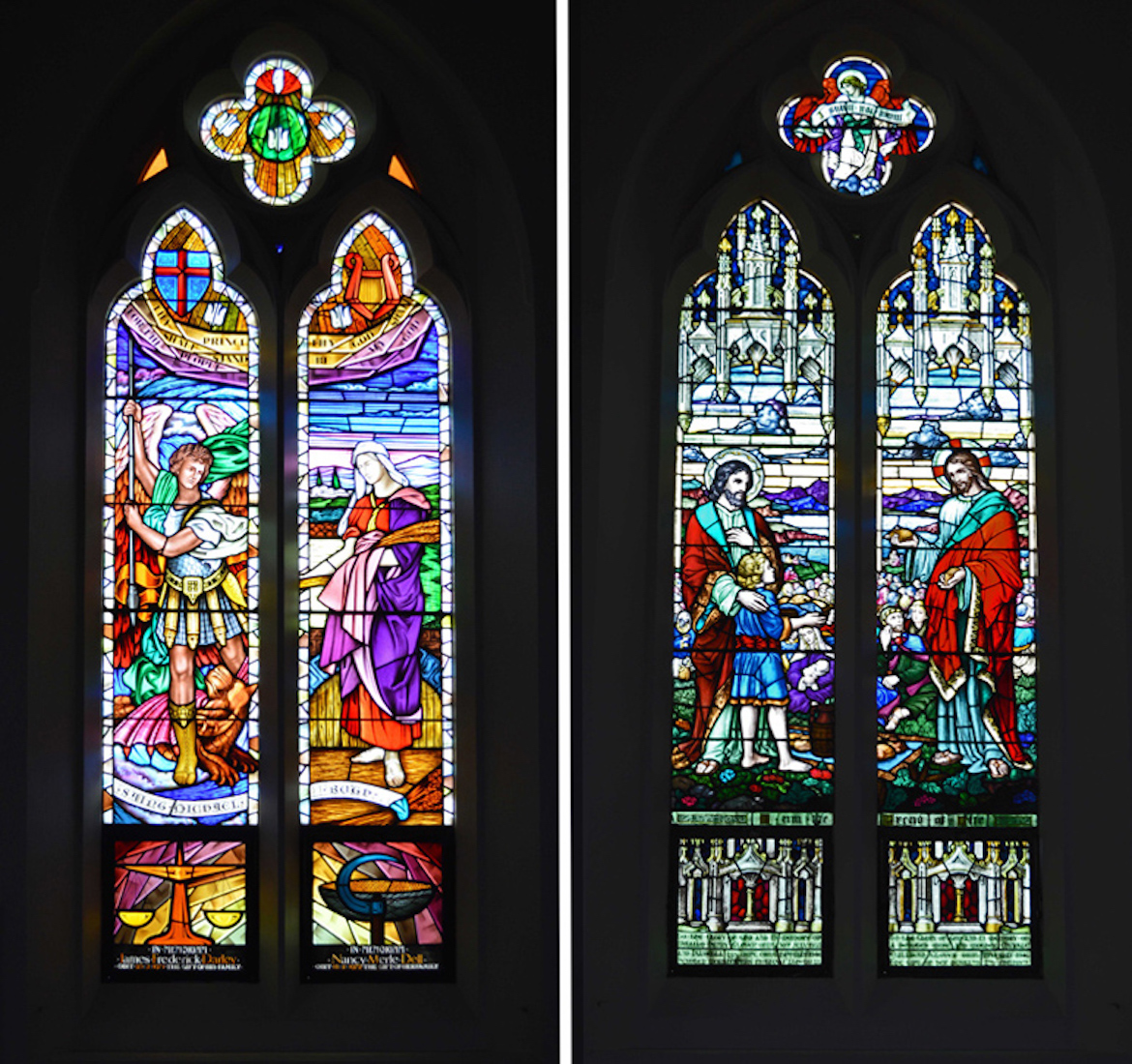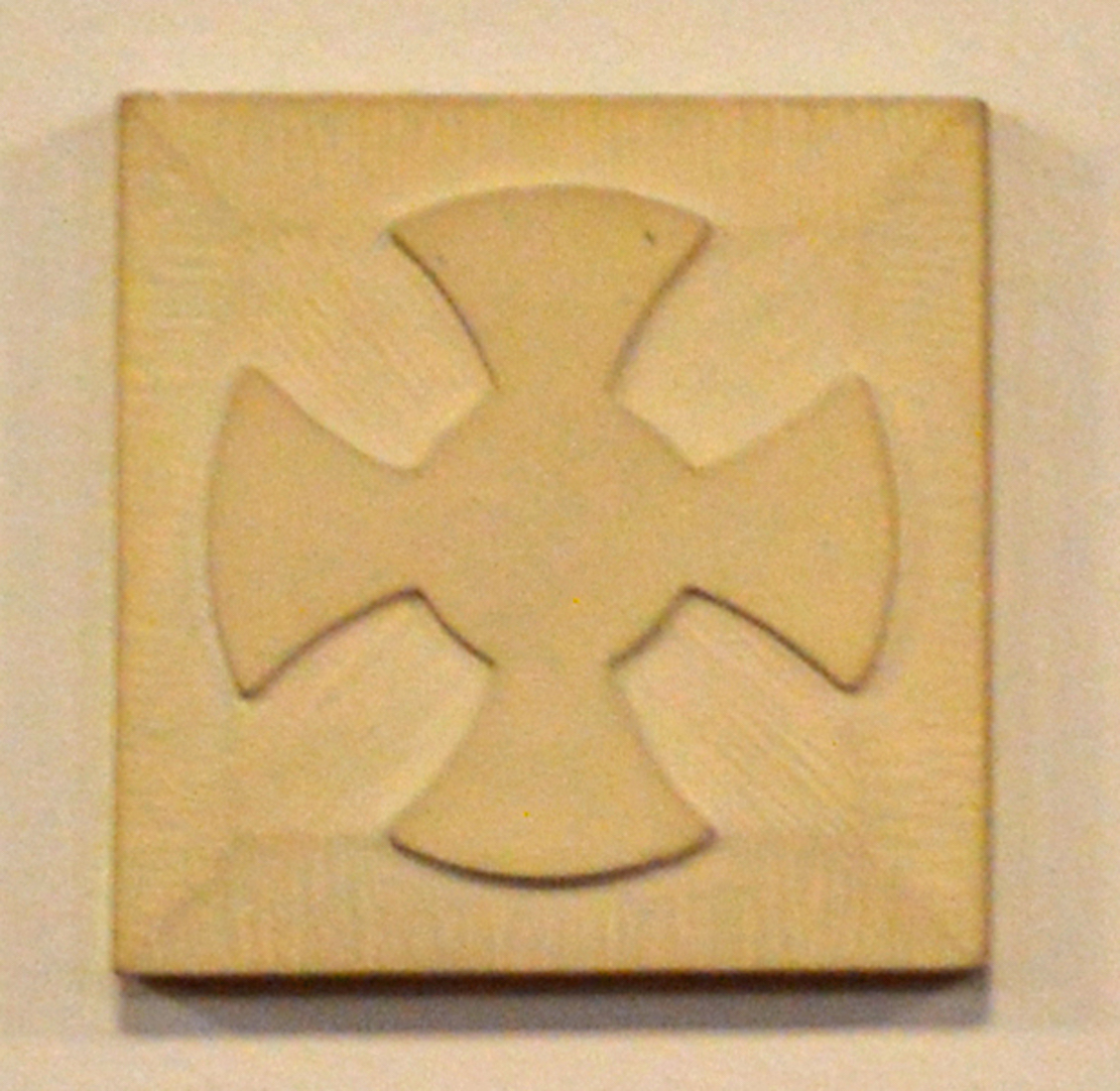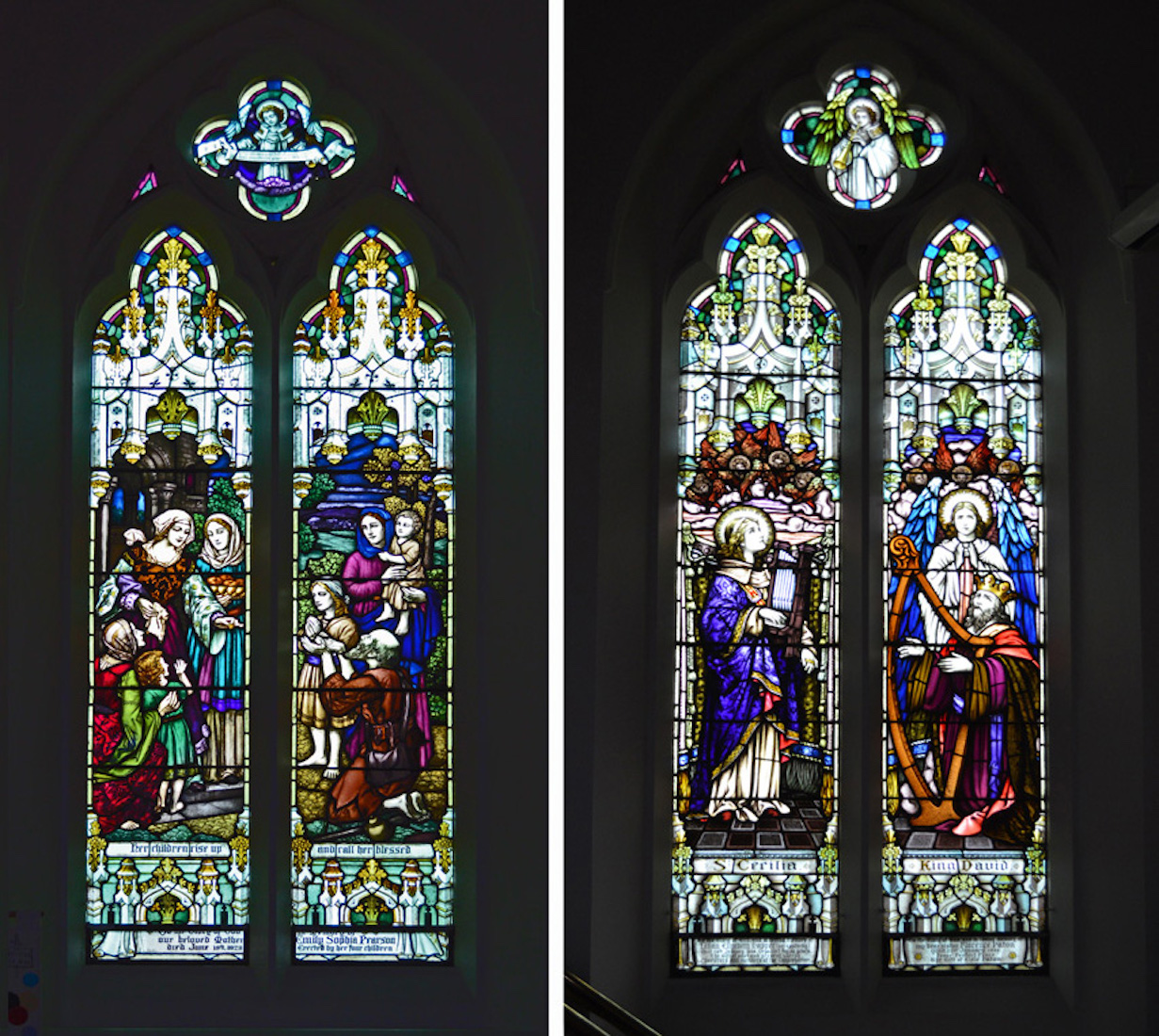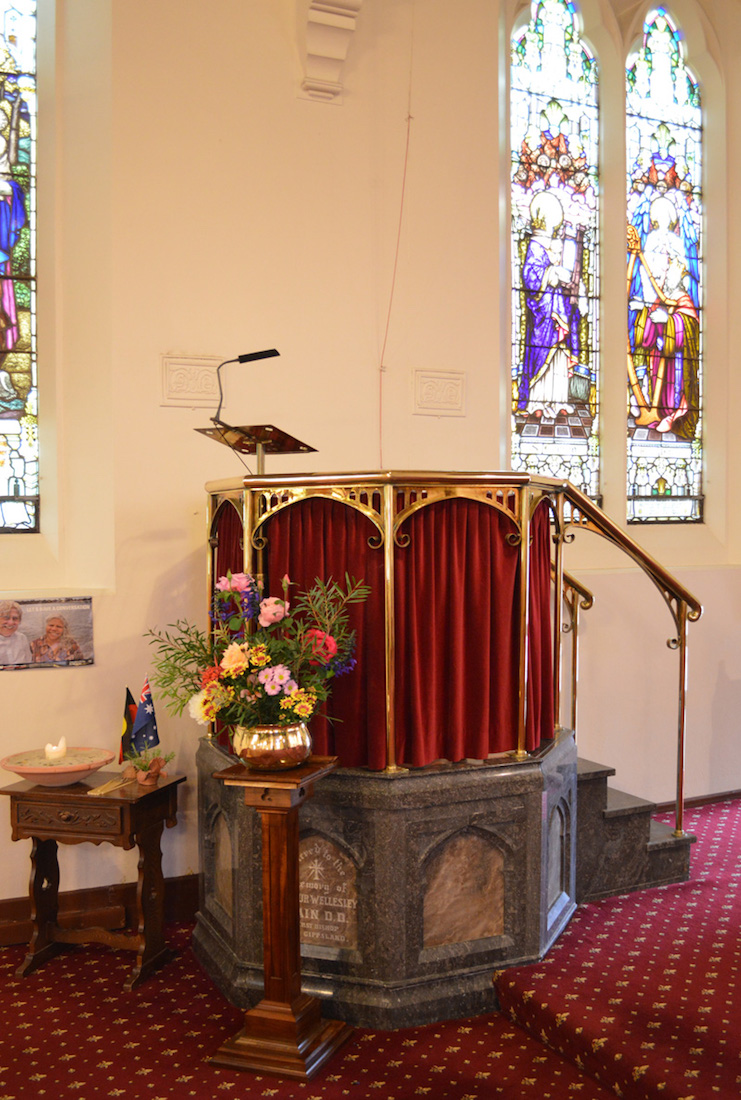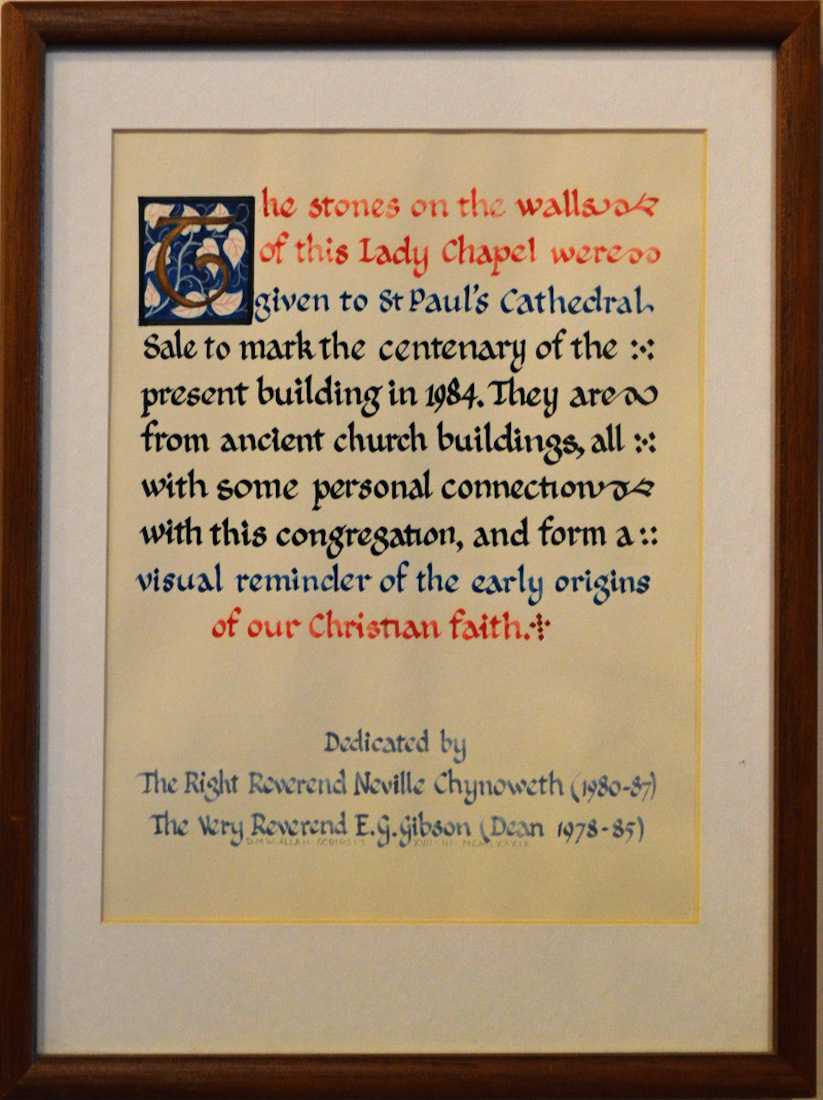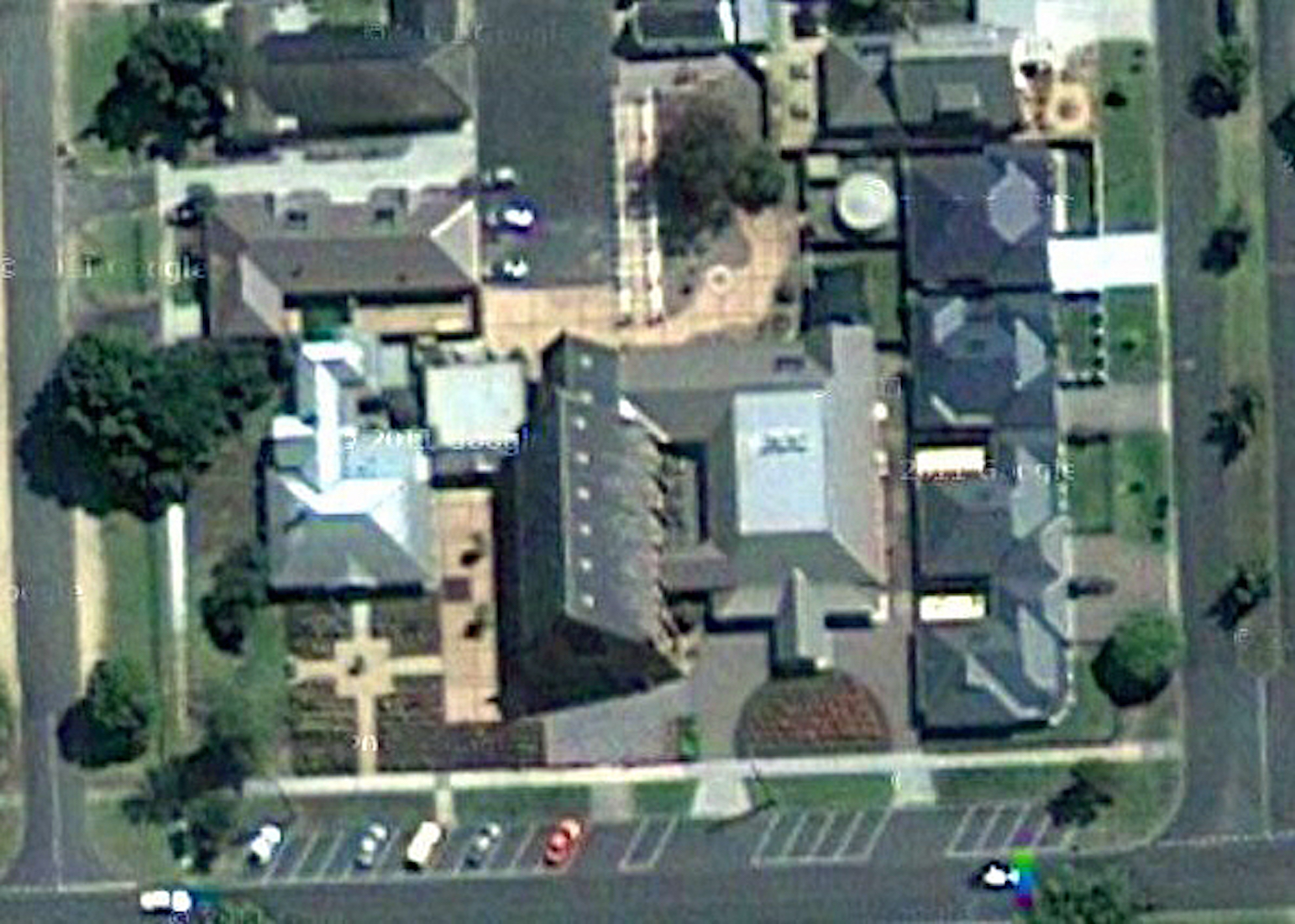
This rather grainy satellite view from Google Maps shows the Cathedral at 149 Cunninghame Street, Sale. The orientation of the Cathedral is almost north-south geographically, with the ‘West Wall’ to the south. As usual we use here the Liturgical (Ecclesiastical) directions. We notice the absence of a transept, as well as the sacristy at the Northeast corner, and the two links to the Delbridge Hall to the South. The Eastern link is the ‘Our Lady Chapel’. There is an interesting cross in the Northwest garden (bottom left!) – best seen from the air! INDEX
2. SOUTHWEST VIEW
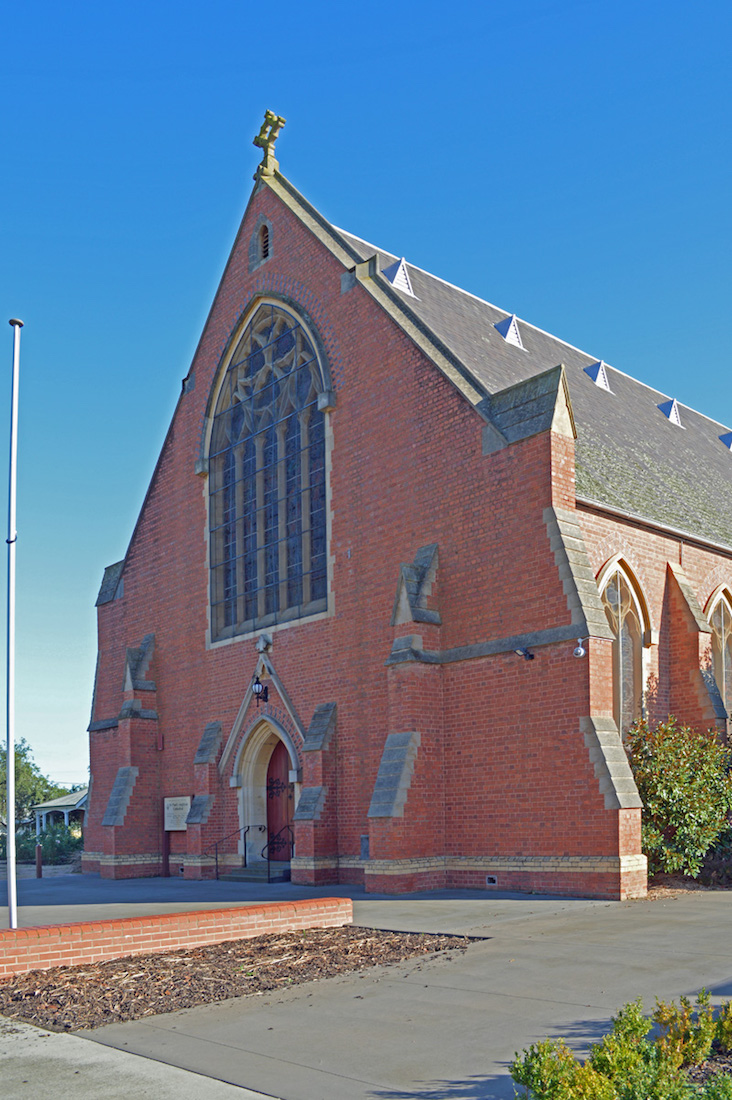
St Paul’s Cathedral, Sale is the Cathedral church of the Anglican Diocese of Gippsland in Australia. The Cathedral building, built in 1884, has a rectangular footprint and is constructed of red brick and slate roofing. The Church is historically and symbolically associated with the establishment of the regional importance of the Diocese of Sale, which became a See several years after the Church was built. Architecturally, the building has design value as an example of the work of notable ecclesiastical architect Norman Billing.
3. WEST WALL
Built in red brick with rendered dressing on buttresses and parapets, this Church demonstrates the Mainstream Decorated Gothic style. It has a dominant nave with lofty gable roof and smaller chancel section. The use of polychromy was typical of Billing’s ecclesiastical work at this time and representative of the influence of Venetian Gothic architecture and the writings of John Ruskin. A series of stained glass windows are features of the side walls and chancel. The facade features a spectacular five light window complete with stone tracery.
4. GABLE CROSS
At the apex of each end of the roof gable stands a most unusual cross. The design appears to be of Gothic origin, with four Gothic arches at the centre.
5. SIGN
Every church has a distinguishing notice board. Some are inspirational, but this one is functional, with a little church history thrown in! And what a long history it is ... .
6. FRONT DOOR
Country churches which later become Cathedrals, were not of course designed to be Cathedrals. However, the West door of St Paul’s, with its decorated brick arch, is quite grand in a modest way. It looks as though we shall have to force an entry to explore the interior!
8. NAVE ROOF
Many people fail to look up inside a church. It is a place for looking up! There is some fine workmanship in this timber roof. Note the beautiful oregon buttresses which echo and repeat the Gothic theme of the building.
9. LIST OF BISHOPS
St Paul’s was a church before it became a Cathedral in 1902. On the West wall, just North of the main doors, we find two boards: this one listing the Bishops of Gippsland, and a second, the incumbents of Sale. St Paul’s became a Cathedral in 1902 when the first bishop was installed, and the church became the home of the bishop’s throne, or cathedra.
10. NAVE NORTH WALL
St Paul’s contains some wonderful stained glass windows: here is an overview of what is to follow. On the North wall, as well as the windows, we notice several icons, and near the centre the baptismal font.
11. NORTH WINDOWS 1
The excellent ‘Cathedral Walk’ notes say little about the nave windows, so we shall have to let the windows speak for themselves! At left there is a depiction of the Lord’s Supper, with Jesus blessing the Bread and the Wine. The scroll reads, ‘This do in remembrance of me’. The window was given by the Shipley Family in gratitude for happy years within the Cathedral congregation. The right window shows Jesus ascending into Heaven. The scroll reads, ‘I ascend unto my Father & your Father’. The left pane is the gift of the Cherry Family, in thankfulness for their membership of this congregation since 1857. The right pane is the gift of Jean Higgs and family, in memory of Alice Sarah Taylor 4.12.1882 – 20.7.1968.
12. ST PAUL AND ST FRANCIS
On the North wall to the right of these two windows we find first the icon of St Paul holding his Epistles. This was a gift from the Cathedral Chapter in 2003, and was created by Anne Connelly of Gippsland. Alongside it is an embroidered panel of St Francis made by Sue Watts.
13. FONT
Set back a little from the North wall we come to the baptismal font. This dates from 1860, and links the Cathedral with the first church building in Sale. It was presented by Captain John William Jones of Fulham. Appropriately, the first child to be baptised in the Font was Ernest William, his son, on 10th March 1860.
14. NORTH WINDOWS 2
The panes of the left window show St Michael slaying a dragon, and Ruth gathering sheaves. The lower panels show the Scales of Justice, and a scythe with a basket of corn. This window was given in memory of James Frederick Darley who died 25.2.1971, and Nancy Merle Dell who died 18.2. 1972. The panes of the right window show Jesus feeding the multitude. Underneath is the inscription, ‘I am the Bread of Life’. The left pane was given in memory of William Henry Glover who died 30.7.1935 and Isabella, his wife, who died 24.5.1946, described as devoted worshippers in the Cathedral. The right pane was given in memory of Myrtle Elizabeth Glover who died 27.5.1946, and described by her family as a devoted wife and mother.
15. ICONS
Between the previous two windows are these icons. The icon on the left depicts ‘Jesus – Lord of all’ and was procured by the late Bishop Graham Delbridge through his friend the Bishop of Helsinki, and was painted by a Finnish artist. It was a gift from St Anne’s and Gippsland Grammar School confirmation candidates in 1979. The icon on the right was painted by an artist in Macedonia. It also shows St Paul holding his Epistles, and was a thank offering of Mr and Mrs Iliopoulos for the use of the Cathedral for the funeral service of their two children who were tragically burnt to death.
16. IPSWICH CROSS
The stone set into the North wall between the icons reminds us of the global nature of the Anglican Communion. It once formed part of the Cathedral Church of the Holy and Undivided Trinity of Norwich, England. It was presented by the Lord Bishop of Norwich, the Right Reverend Maurice Wood, when he visited the Diocese in February 1977. The stone is carved with an ancient Christian symbol, the Ipswich Cross. St Paul’s has an historic link with Norwich Cathedral, as Arthur Payne, the first Bishop of Gippsland, was ordained there.
17. NORTH WINDOWS 3
The lovely window on the left pays tribute to the perfect wife and mother of Proverbs 31. Under the picture are the words ‘Her children rise up and call her blessed’ (Prov 31:28). It was given in memory of Emily Sophia Pearson who died 19.6.1923, and was given by her four children. The window on the right shows St Cecelia, Patron Saint of Music, and King David, making music together. The left pane was given in memory of Lilian Elizabeth Napper (nee Easterby) who died 26.1.1938. She had been organist at the Cathedral for 30 years, and the window was given by Clergy, Choristers and members of the congregation. The right pane was given in memory of Florence Paton who died 22.1.1936, by her sister, Elsie Paton.
18. PULPIT
Finally we come to the marble pulpit with its brass railings, installed in 1929 closer to the centre of the Cathedral. The marble was quarried at Buchan in Gippsland. The pulpit incorporates a memorial stone commemorating the Right Reverend A. W. Pain, DD, the First Bishop of Gippsland.
19. STONES
Many Cathedrals have odd bits of stone from other Cathedrals attached to their walls, but St Paul’s has made an art form of the practice! This display comprises 11 pieces of stone. Some of the stones here are from Old St Paul’s (Sale), Rochester Cathedral, Wells Cathedral, St George Cathedral (Jerusalem), and St Andrew’s Cathedral (Sydney).
20. STONES SIGN
Beside the display of stones is this illuminated manuscript telling how the stones were given to mark the centenary of St Paul’s in 1984.


